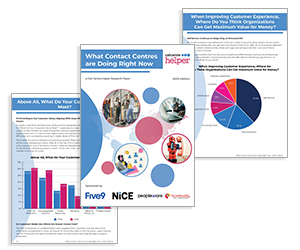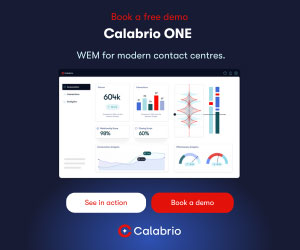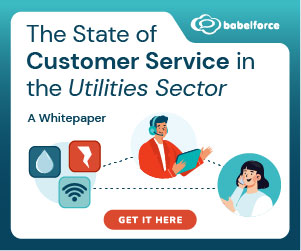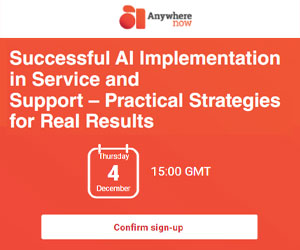Zaineb Ahmed at Peopleware explores why HR software isn’t enough for contact centre absence tracking, HR vs modern WFM software for managing time off, 4 strategic advantages of using modern WFM software for leave management and why WFM software wins for time-off management.
Managing time off in contact centres is a critical task that directly impacts service levels, agent morale, and operational efficiency. Many contact centres still rely on HR software for absence management.
However, these are standard systems built for handling administrative tasks such as payroll and simple leave tracking.
They are not equipped to handle the complex requirements of time-off management in the contact centre industry. That’s where Workforce Management (WFM) systems truly shine.
WFM software is designed especially for operational efficiency in contact centres, handling complex absence management scenarios, forecasting, and scheduling.
Why HR Software Isn’t Enough For Contact Centre Absence Tracking
Effective time-off management continues to be a big operational headache in contact centres, directly affecting customer and agent satisfaction.
A single absence during peak hours can disrupt the customer experience if the staffing levels are not proactively adjusted.
In traditional contact centres, where time-off management is separated from WFM and handled by HR software, this mismatch often occurs, and leads to:
- Overworked agents
- Lower first-call resolution
- Longer wait times
- Higher abandonment rates
- Dissatisfied customers
This happens because standard HR software is typically designed to handle the fundamentals of absence management and misses the nuanced needs of specialized industries such as contact centers and BPOs.
While HR software can track leaves and remaining balances, it frequently lacks the functionality required for considering employee demands and assessing the impact on coverage and service quality.
Workforce Management (WFM) tools are built for this complexity. They turn leave management into a strategic process that protects both service quality and employee satisfaction.
In customer service, the impact of employee satisfaction is well-documented: According to research by McKinsey & Company, engaged and satisfied contact centre employees are 3.3x more likely to resolve customer issues.
HR vs. Modern WFM Software For Managing Time Off
In contact centres, time-off management is not a simple balance-tracking task, and that’s where standard HR software falls short. HR systems often approach leave management in a one-size-fits-all manner.
Their main focus is tracking absences, calculating remaining balances, and delivering detailed reports, all of which fit most industries. However, they fail to account for the operational realities of a contact centre environment.
By contrast, WFM tools take a holistic approach to leave management. Beyond labor laws, company policies, and balance tracking, they also assess how a time-off request affects staffing levels, agent shifts, and skill sets required for each schedule.
This ensures every approval decision supports business needs while honouring employee entitlements. The table below outlines core operational differences between standard HR software and modern WFM tools, demonstrating why the latter is a clear choice.
| HR software | Modern WFM software | |
|---|---|---|
| Functional scope | Includes standard functionality such as balance calculations, accruals, and policy compliance. | Integrates agent skill profiles, schedule constraints, staffing levels, and labor law requirements, ensuring every request passes all relevant checks. |
| Process efficiency | Absence tracking is separate from the rest of the WFM processes, requiring extra manual steps to add time-off data for adjusting forecasts and schedules when approvals or cancellations happen. | Absence tracking is seamlessly integrated with WFM processes, with time-off data being fully considered in forecasting, scheduling, and intraday management. |
| Employee empowerment | Primarily shows remaining balances, with limited visibility into how decisions are made. | Often, provide transparency into decisions by clearly showing why a request was approved or denied. |
4 Strategic Advantages of Using WFM Software For Leave Management
The right WFM tool can make the absence management process efficient and empowering for both agents and managers.
Agents can submit time-off requests through self-service portals and understand exactly how their request affects scheduling. Managers gain real-time visibility, avoiding tedious manual adjustments and ensuring compliance across all policies.
However, gaining operational efficiency is not where the value stops. When done right, handling leave management with a modern WFM software can also help to:
Consistently Meet SLAs With Data-Driven Decisions
For contact centre managers, especially BPOs working with multiple clients, a key requirement is to ensure service levels are met at all times.
Planned or unplanned absences, without proper evaluation, have a direct impact on these. Advanced WFM systems can evaluate time-off requests against forecasts, agent skills, and staffing demand.
This helps them instantly see whether approving a leave request will cause coverage gaps, ensuring client SLAs are protected even during peak demand.
Reduce Planner Workload With Automation
When time off is separated from the WFM process, planners have to manually adjust schedules every time a request is approved or cancelled. This is time-consuming and prone to errors.
By integrating leave management directly within the WFM system, errors are eliminated, and workload is reduced by automatically adjusting schedules when approvals or cancellations happen.
Empower Employees With Transparent Processes
Requesting time off is often stressful for agents if the process is unclear. Agents want to know why their requests were cancelled, rejected, or approved.
Not having this transparency over the decision process causes dissatisfaction and feelings of uncertainty. As a result, the service quality suffers.
Modern WFM software simplifies this by enabling agents to request leave directly through self-service portals, view remaining balances, upcoming time off, and track approval status.
This removes the burden of repetitive follow-ups, unclear processes, and takes away the stress of requesting time off by giving them the autonomy to plan their schedules with confidence.
Prevent Agent Burnout With Smarter Capacity Planning
When time-off data is seamlessly integrated into the WFM system, it can be leveraged to create optimized schedules that respect agent preferences and capacity.
This allows planners to proactively prevent agent burnout, boosting morale and reducing turnover. It can enhance customer satisfaction by ensuring staffing levels consistently match demand by keeping agents from being overworked, enabling them to deliver better service.
Recap: Why WFM Software Wins For Time-Off Management
In the fast-growing contact centre environment, where absences (planned or unplanned) directly impact service quality, effective time-off management needs to evolve from an administrative task to a strategic function that accounts for customer experience, agent satisfaction, and operational efficiency.
Standard HR systems are not designed to handle this complexity and fail to deliver the strategic advantages that WFM systems offer.
When integrated within the Workforce Management systems, time-off management becomes a strategic tool that provides the following benefits:
- Greater planning accuracy
- Consistent service quality
- Better employee experience
In short, WFM tools transform time off from a reactive HR task into a proactive approach for stability and competitiveness.
This blog post has been re-published by kind permission of Peopleware – View the Original Article
For more information about Peopleware - visit the Peopleware Website
Call Centre Helper is not responsible for the content of these guest blog posts. The opinions expressed in this article are those of the author, and do not necessarily reflect those of Call Centre Helper.
Author: Peopleware
Reviewed by: Jo Robinson
Published On: 17th Oct 2025
Read more about - Guest Blogs, Peopleware




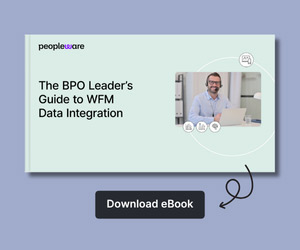

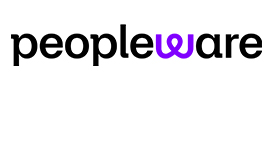 Peopleware is a leading workforce management (WFM) solution, trusted by over 500,000 users in 30+ countries. With smart forecasting, automated scheduling and real-time management, organizations can optimize workforce efficiency and keep work aligned with demand. From precise time tracking to flexible planning, Peopleware helps organizations boost operational efficiency and foster a more engaged, productive workforce.
Peopleware is a leading workforce management (WFM) solution, trusted by over 500,000 users in 30+ countries. With smart forecasting, automated scheduling and real-time management, organizations can optimize workforce efficiency and keep work aligned with demand. From precise time tracking to flexible planning, Peopleware helps organizations boost operational efficiency and foster a more engaged, productive workforce. 




